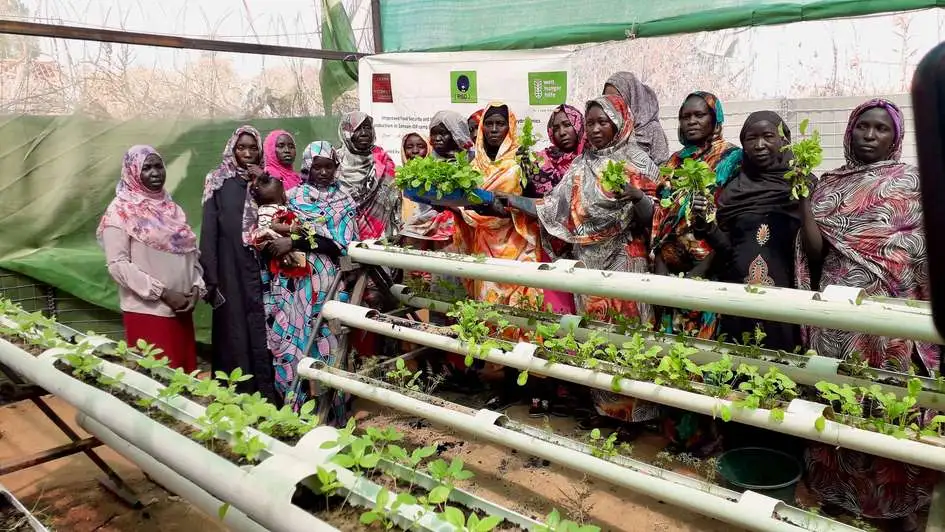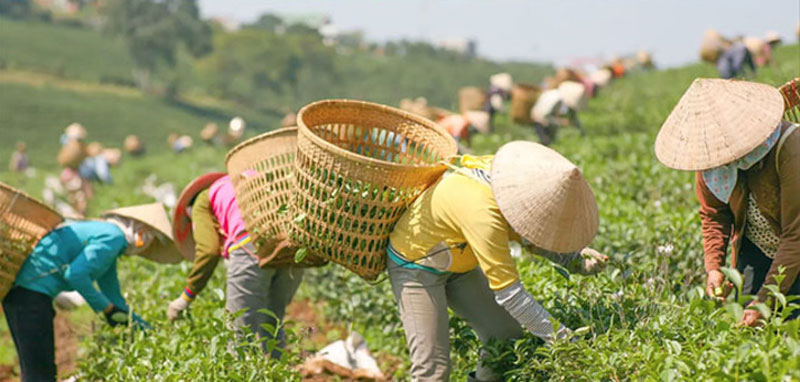My first master’s degree (MS) was research on “Small Agriculture: An Approach to Solve the World Food Deficit”. It was successfully operated in a dozen countries in Latin and South America and the Caribbean. Technology has steadily increased in the agricultural industry and there have been great strides in fertilizers, minimization of water use, and conservation of agricultural resources during the last 30 years. To feed a world of eight billion people, much pressure is put on the agricultural industry to satisfy the ever-growing demand for food. However, water, energy, and other costs associated with farming has steadily increased, which is witnessed directly by escalating food prices around the world. Today, farming practices that apply the proper amounts of fertilizer, pesticides, herbicides, water, and other chemicals are known as precision agriculture.
Many NGO’s push that increased agricultural innovation and the use of technology by farmers is the only way to eliminate world poverty, meet the rising demand for food, and cope with adverse effects of climate change. They are wrong because there are no available funds to initiate enough of these type programs around the world unless countries and wealthy benefactors unite and make it happen. In many developing countries, a significant portion of the population relies on traditional or low-tech agricultural methods due to limited access to modern technology, such as machinery, irrigation systems, and advanced crop-management techniques. This can be due to factors such as economic limitations, lack of infrastructure, and limited education and awareness about modern agricultural practices, but it is mostly due to lack of funds.
Small farms operated by hand account for about one-third of the world’s food production. These type farming operations occur in impoverished countries where it is necessary to grow crops by hand using a hoe, carrying water, harvesting by hand, and storing the crop or selling it at the local market to provide money for the household and seeds and supplies for the next crop. There are too many countries to list whose population are in this predicament, including El Salvador, and many Latin American countries, the highlands of Chile (where I helped farmers put up small solar panels on their huts so they could have electricity at night), as well as many places in Africa, parts of Europe, the Middle East, China and elsewhere. Everything is done by hand due to lack of money. The most impoverished people who need to operate low-tech are most of Africa, ranging from 10 to 80 percent poverty rate (World Bank data) depending on where in the country, Mexico, which is approximately 40 percent, and South America ranging from 30 to 40 percent on average. Even the U.S. averages 20 percent poverty rate. Many cities have begun community gardens but those who work in them are typically above the poverty level. Most of the poor remain left out.
Reports by NGO’s will tell you poverty has fallen but it has not. What has changed is the way it is measured. The Covid pandemic placed many more in this category. One-quarter of the world’s population minimally remains in poverty. It is among this group that low-tech agriculture is extremely important. The real beneficiaries of precision agriculture are 1.3 billion people in developed countries so, 6.7 billion do not fare as well making food security a pressing issue. Advanced agricultural technology is of little use to most of the world’s population who are unable to afford it and who do not have the skills to apply it. Tragically, high-tech agriculture is what gets transferred to struggling people and struggling nations.
Billions of dollars have been spent in developing countries on agricultural technology. One of the real problems is that by the time the money gets to those it was meant for, middlemen have usurped most of it. The USAID finally realized this and changed how they funded food and other projects. Whatever the perceived benefits to recipients or donors, or diplomatic gains and exports for the aid givers, the practical benefits to those who need the technology are an illusion at best. You can witness this on small farms I work with in El Salvador where the ground is rocky, water scarce, and hope even scarcer. Everything is done by hand; the people cannot afford gasoline, let alone high-tech agricultural equipment. The gap widens every year while developed countries pull away from the rest leaving them in greater poverty.
Instead of getting what they could really use, the poor in such countries receive technology that is not only inappropriate but wasteful. It is akin to building great airports where most of the population cannot afford to fly, which has happened. The money used could have helped those in need. The poor need a more basic technology such as better hoes, stoves that use less fuel, hydraulic oil presses, substitutes for cement, pedal-operated grinders, ways to store milk for a week, and a host of others. What always tends to happen, just like on Native American Reservations, is failed megaprojects, white elephants that in most cases have resulted in obscene wastes of time, money, and labor. These includes bridges no one uses, idle agricultural processing plants, grain silos where there is no grain, and many more. And, the administrators pulling out when the funding is gone, which leads to a quick collapse of the project.
It seems little has been learned over many decades. Except that there continues to be massive miscalculations that have been compounded by many smaller ones. The result has been that the poor remain poor and totally dependent on small-scale/subsistence agriculture. The continued failure of these projects, large or small, have some economists and policy makers thinking that broad economic changes will help struggling nations. It will not. Changes and fluctuations in global pricing have little effect on poor farmers in even poorer countries. A country singer, Tom T. Hall likely said it best in one of his songs. “Someone told us wall street fell, so damn poor we couldn’t even tell”. The overall feeling among these economists is that we should lend the world’s excess cash to good credit risks like the U.S. – the biggest debtor of all and forget about the poor countries because their futures are bleak. Sadly, this continues to be the case.
Throughout history, especially in Africa, millions of people have died and none of the developed countries lifted a finger to help them because they have no resources that are of worth to these countries. And so, they continue to languish in poverty. With so much technology and the rise of AI, a better idea would be to concentrate energy, ingenuity, and willpower on providing practical solutions to the most basic problems facing poor countries – a reliable supply of food, adequate housing, and clean water. Developed nations can afford this type of aid. Technology either exists or is in promising stages of development, whether it be water treated by sunlight, small water wheels for irrigation, desalination plants (like those in Libya I worked on that changed a desert into an agricultural oasis), drip irrigation systems, and small-scale equipment to ease the back-breaking numbness of 10-20 hours per day of hand labor done on low rations and scarce water.
Imagine if all the aid given relied on something as simple as a hydroponic system made from PVC or other pipe. This is an example. In simplistic terms, all that would be necessary is water, the materials to construct the system, and nutrients for growing. These systems can yield up to 20 to 30 times the equivalent of soil using the same area size. One family I know in El Salvador, produces 30 pounds per month from a five-pipe system that is about five feet long and six feet high. Practicality rather than wasting money on precision agriculture that people cannot afford in developing countries is what is necessary. Along with that, it takes people who care and want to help.

Throughout the past 60 years, when developed countries extend aid to poorer countries, it is wise to remember that the simplest ideas often have the greatest impact, and that local people often know how best to apply them under dire conditions. Ironically, when the lights go out, such farmers will be in the best shape but for now, the strategy should be to help them with technology that is low tech and that works for them. Technology that pushes precision agriculture as the way to eliminate poverty, meet the rising demand for food, and cope with adverse effects of climate change will not and has not worked in poorer countries. The burden on food security needs to be lessened globally. A strategy, such as low-tech agriculture will work and will lessen the burden on food security. Have a safe day.

